High class Tudor hook tag found at Pulham Market is 'off the scale'
- Published
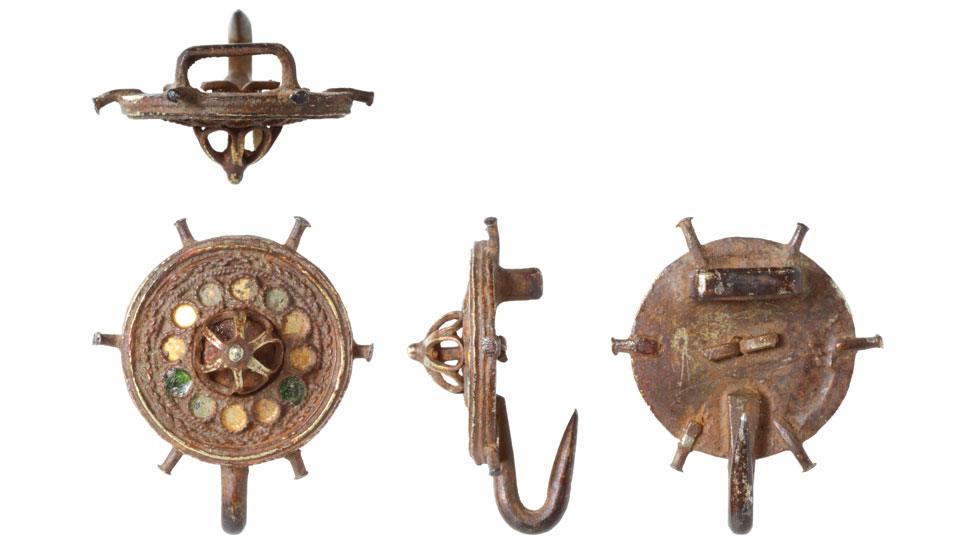
Analysis by a British Museum expert revealed the 24mm by 20mm (0.8in by 0.7in) hooked tag dates to after 1520
The workmanship on a tiny, early Tudor hooked tag discovered by a metal detectorist "is off the scale", an expert has said.
Hooked tags are believed to have been used by women to hold one layer of skirt from another so both can be seen.
Found near Pulham Market, Norfolk, it originally had an elaborate filigree frame and 12 green glass inlays.
"A mad amount of bling went into the tag, why do this when we can't see them?" said historian Helen Geake.
"It's incredibly complex in its workmanship - they're all quite complicated, but this is off the scale," the Norfolk finds liaison officer, external added.
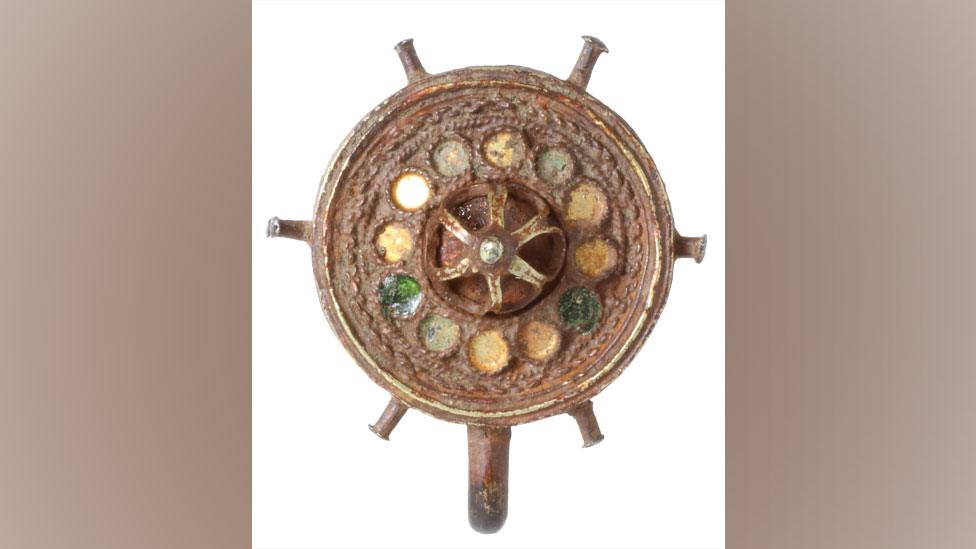
The gilded object once had 12 green glass inlays and probably had pearls or beads hanging from the six radial post
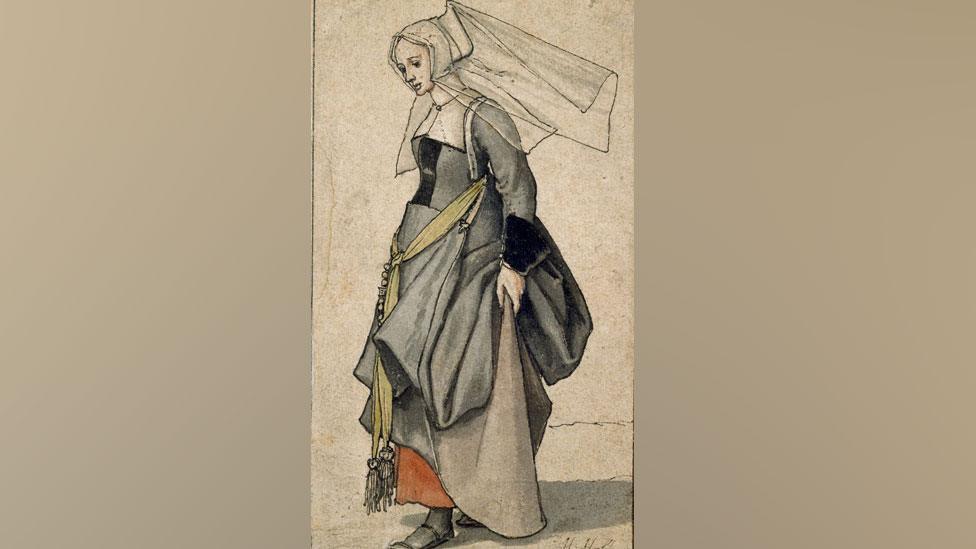
The tags may have been used to clip an over skirt up above a lower skirt, as in this Hans Holbein drawing, with a possible tag attached to the narrow, yellow ribbon
At least 700 silver post-medieval hooked tags have been found across England and Wales since the Portable Antiquities Scheme, external was set up more than 20 years ago.
This find, measuring 24mm by 20mm (0.8in by 0.7in) tag, would have belonged to someone "very high class", said Dr Geake.
It has a central boss design, with chain filigree and its slender radial rods, possibly to hold pearls or beads, "are unique on a hooked tag", as are its glass inlays.
Chain filigree was first seen on objects in the 16th Century, while radiating rods to hold beads are usually only found in 15th Century objects.

Helen Geake describes the workmanship on the tag as "off the scale"
Analysis by a British Museum expert confirmed the ingredients in the glass inlays were not used before 1520, dating it to the earlier part of Henry VIII's reign.
Hooked tags have "baffled the experts" for years, said Dr Geake, because there is little evidence of them in use in Tudor portraits.
"There is a Holbein watercolour drawing of an English woman in contemporary dress which does show what might be a hooked tag, and another by Pieter Bruegel the Elder," she said.
"So from the evidence of two pictures, they were used to hold one layer of skirt from another so both can be seen."
The object is the subject of a treasure inquest at Norfolk Coroner's Court.

Follow East of England news on Facebook, external, Instagram, external and X, external. Got a story? Email eastofenglandnews@bbc.co.uk, external or WhatsApp us on 0800 169 1830
Related topics
- Published4 September 2023

- Published7 May 2021
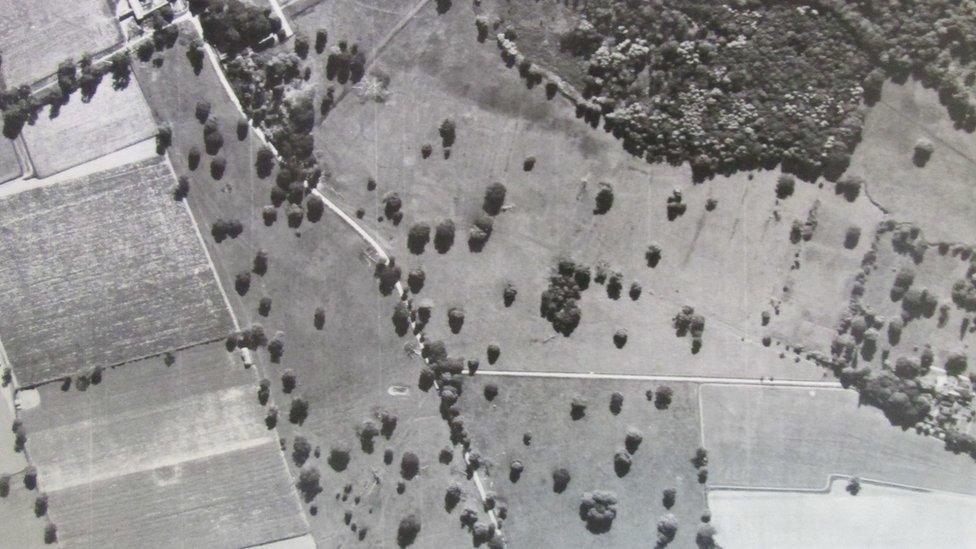
- Published20 May 2018
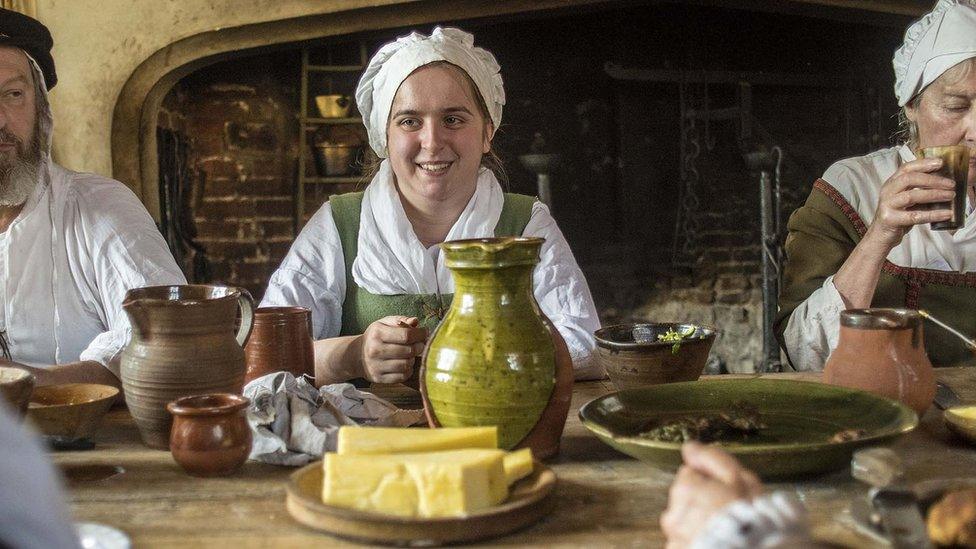
- Published21 February 2015
